Grumman TBF Avenger — The Navy’s Portly Hero

This isn’t one of those stories about a graceful, daredevil fighter from WWII. The Grumman TBF Avenger was a torpedo bomber — big, heavy, and a little awkward. Never meant to wow you with looks. Instead, it got things done.
Rolled out in 1941, it was built for the U.S. Navy to deliver torpedoes and bombs from carriers. Practical, straightforward, and rugged. Most of what you see in photographs is this chunky, barrel-bodied plane, usually three guys crammed inside: pilot, gunner, and radioman/bombardier — sometimes just as battered as the Avenger itself after a mission.
The numbers matter. Nearly 10,000 built. But more than three out of every four Avengers weren’t made by Grumman at all. General Motors took over most of the production, stamping them out under a new designation: TBM instead of TBF. Same plane, mostly, just a different label and a different factory line.
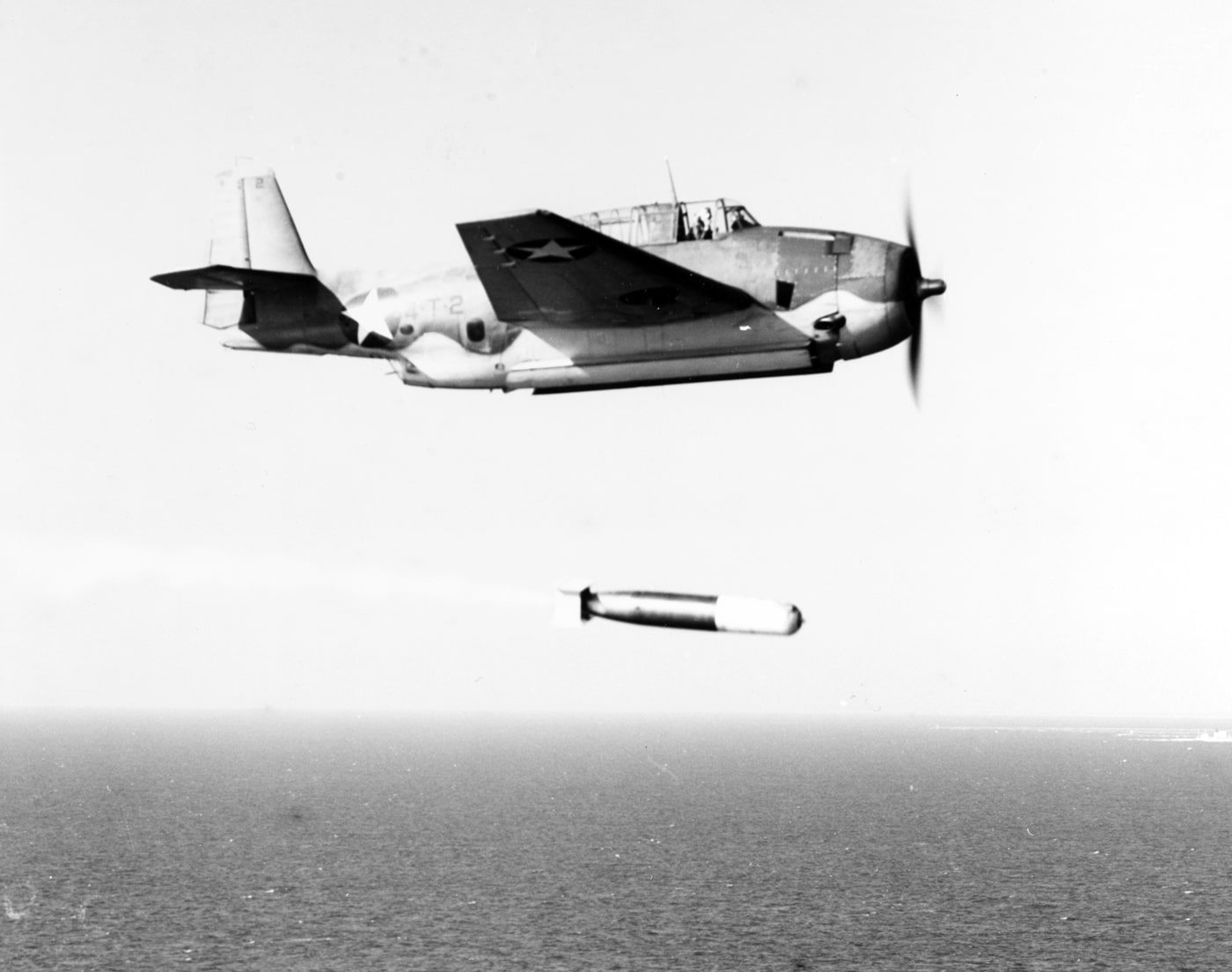
The Avenger showed up in the Pacific at a critical moment. It was thrown into combat at Midway, adapted and improved on the fly, and kept getting pressed into new roles as the war went on. Bombs, depth charges, rockets, even anti-submarine gear. No nonsense, absolutely no glamour — just a lot of firepower and a sledgehammer approach to mission after mission. That’s what you really need to know about the TBF and its GM-built TBM sibling.
A Portly Plane
World War II saw the development of some notably sleek aircraft, including the Vought F4U Corsair, Supermarine Spitfire and Messerschmitt Me 262. The Grumman TBF Avenger was far from sleek. It was known to be big and noisy, and at times it was even described as “portly.”
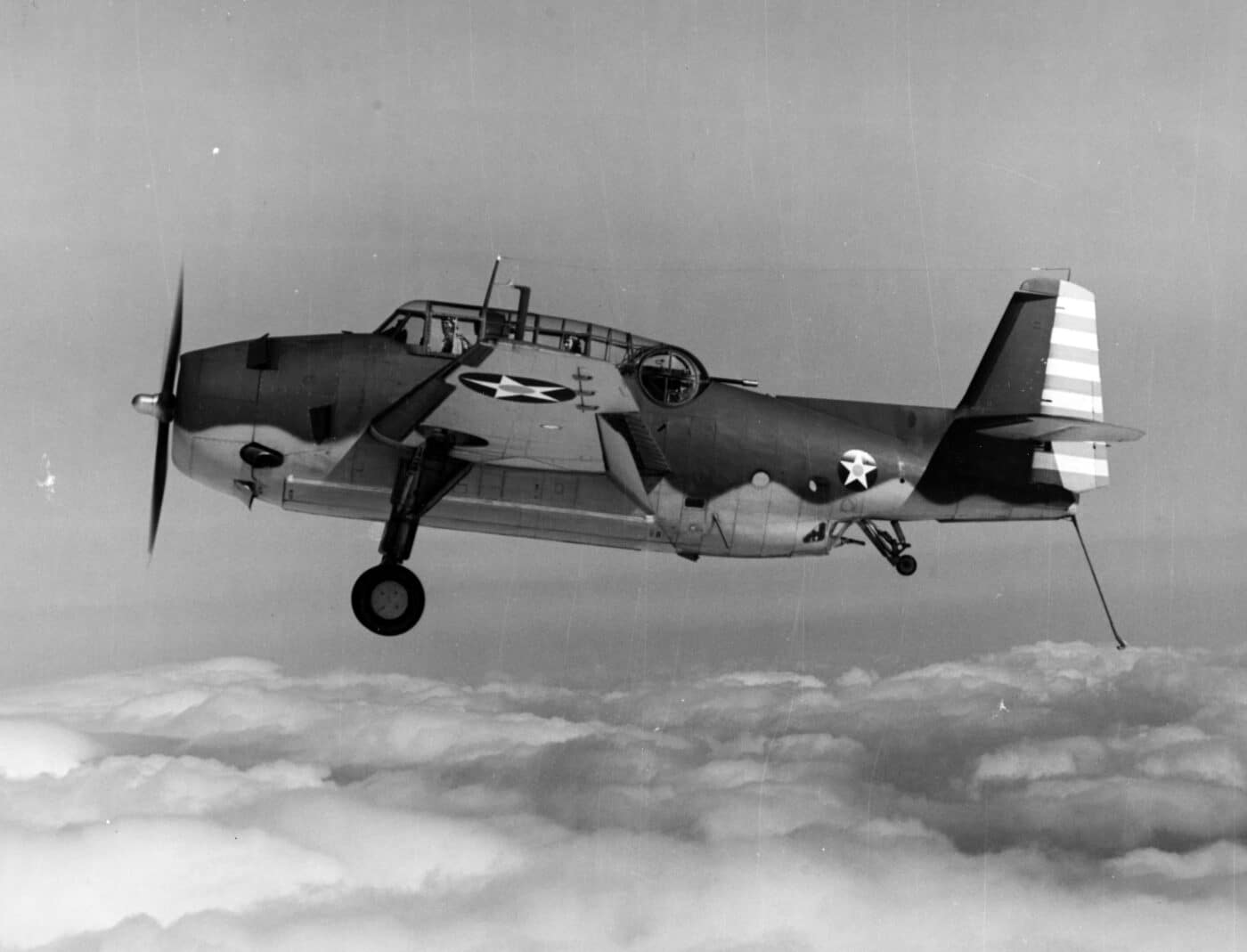
Yet, it was powerful. The barrel-shaped, single-engine aircraft was able to fly from carrier decks over vast distances to attack the Imperial Japanese Navy in the Pacific, carrying torpedoes or bombs. Though six TBFs took part in the famed Battle of Midway on June 4, 1942, just one survived the engagement — and it was in far from pristine shape. That was not a portent of what was to come, though, as the aircraft performed admirably during the War in the Pacific.
Though not a true fighter, at the hands of a strong pilot, it could almost turn like one.
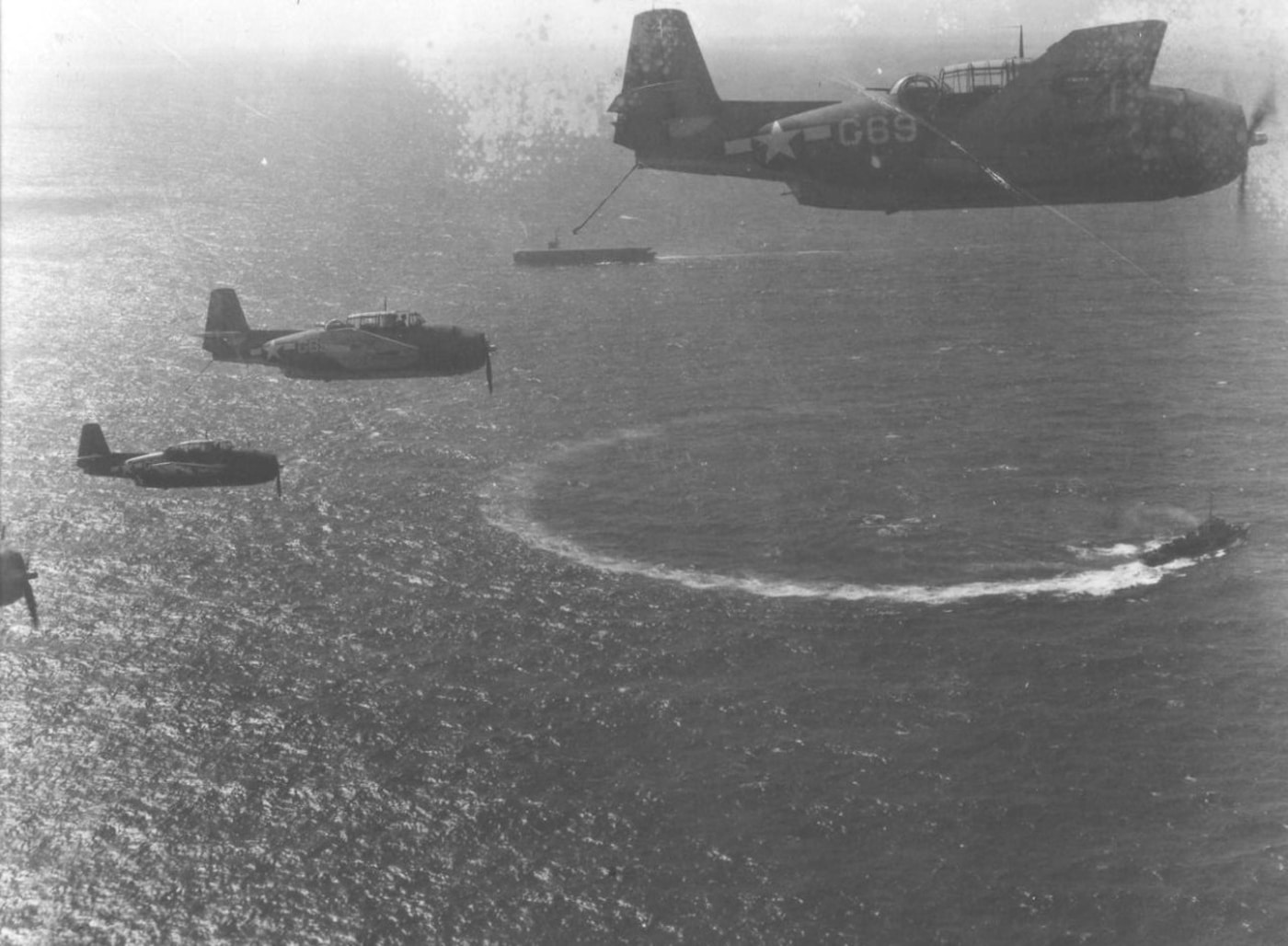
By the time production ended a total of 9,839 were built, with 7,546 made by General Motors. Originally introduced as a three-seat torpedo bomber, it was later adapted to fill an anti-submarine warfare (ASW) role, and even serve as an airborne early warning (AEW) aircraft. So respected was the Avenger that it remained in use with Allied nations into the early stages of the Cold War.
The Avenger Takes Flight
In 1935, aircraft maker Grumman introduced its TBD-1 Devastator. It was arguably as modern for the era as it could get — featuring an all-metal stressed-skin construction, enclosed cockpits, and retractable landing gear. However, aircraft development was moving forward at a pace not previously seen. As the Devastator was already showing its age by late 1939, designers saw that it would be inadequate for the ship-based torpedo-bomber missions that might be needed as World War II broke out in Europe.
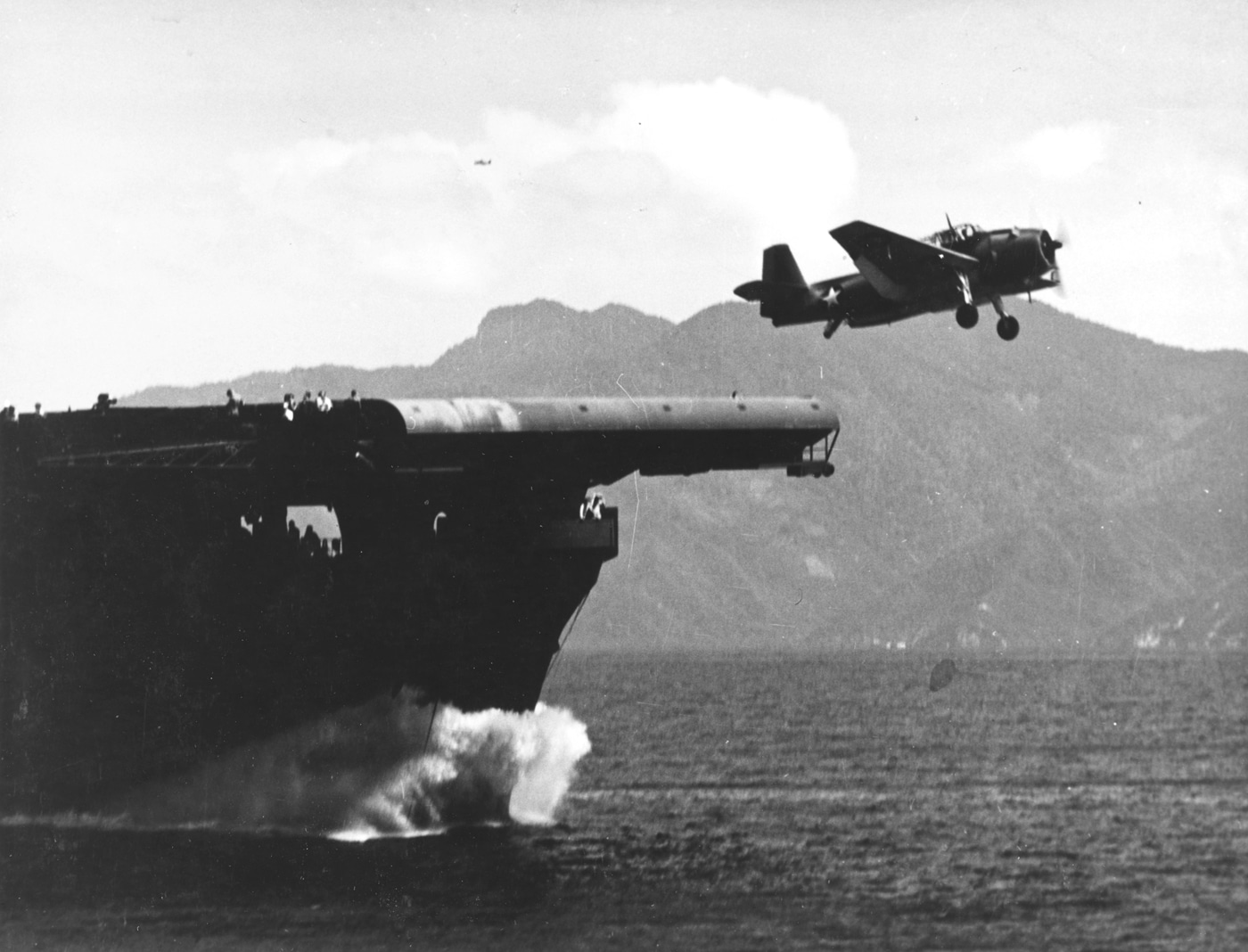
The U.S. Navy had no way of knowing if, or for how long America could remain on the sidelines, and it began plans for an industry competition for the next-generation torpedo bomber. It was a major program, and the U.S. Navy set several stipulations, including the number of aircraft it would need. The Navy also sought to have the future aircraft built around the more powerful engines of the day — the Pratt & Whitney R-2800, Wright R-2600 and Wright R-3350. From its success with the TBD-1, Grumman had a clear-cut advantage.
When the program kicked off in late 1940, Grumman’s team jumped straight in, spending an intense five weeks working on the design. The initial concept earned such monikers as “The Pregnant Beast” or “The Turkey” due to its portly fuselage, angular wing and distinctive tail. Also noteworthy for the era was its internal weapons bay and its gun turret. To ease storage on carriers, the Avenger was outfitted with hydraulically folding wings and equipped with an electrically operated arrester hook.
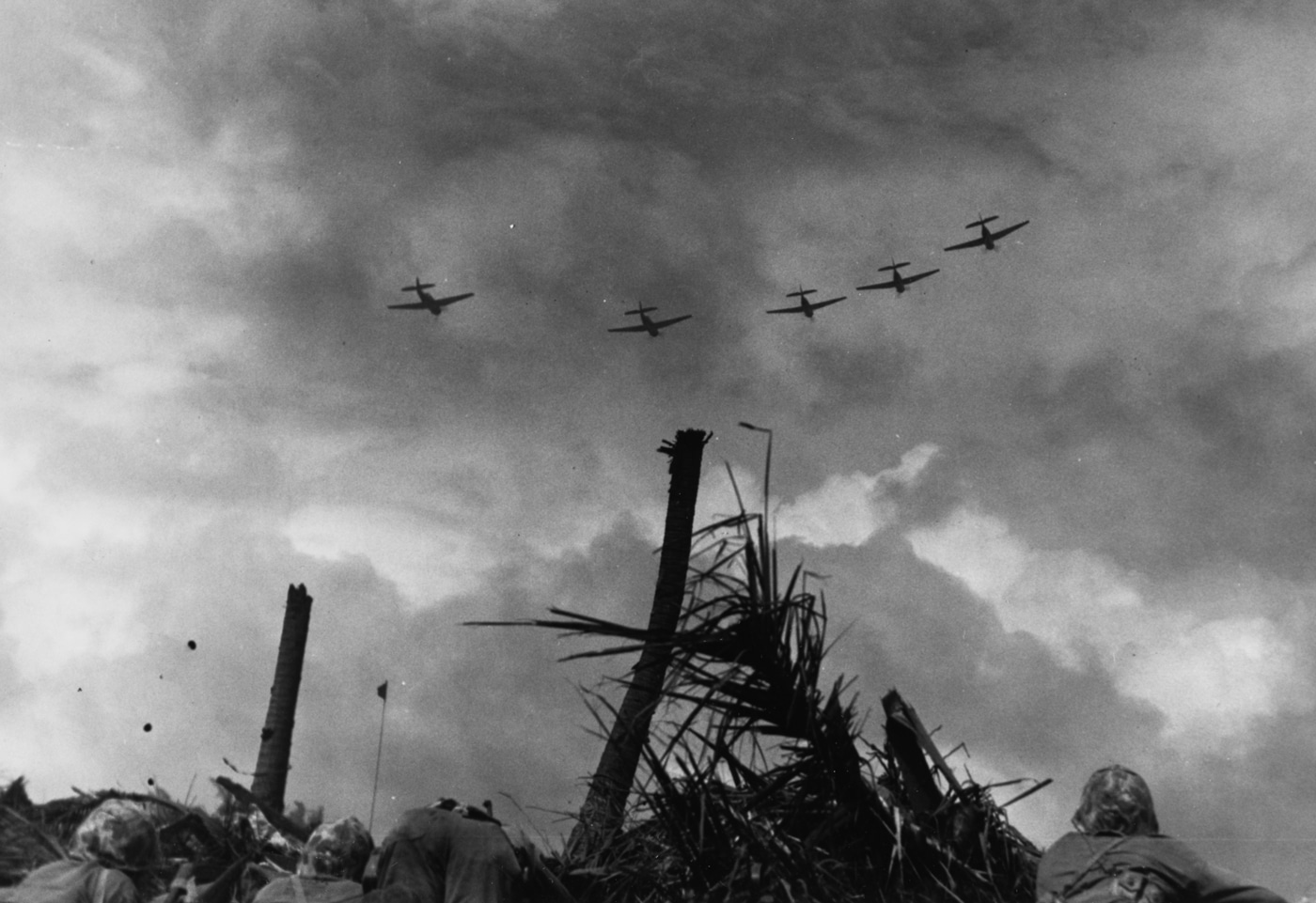
It would be easy to confuse the aircraft for a fighter, but it was actually a single-engine bomber, operated by a crew of three, which included a pilot, gunner and radio operator/bombardier. The Avenger was reasonably well-armed for an aircraft of its size, with two .50-cal. machine guns in the wings, a .50-cal. machine gun in the dorsal turret, and a .30-cal. ventral machine gun. Powered by the Wright R-2600-20 engine (the same that was in the B-25 Mitchell bomber), which produced 1,900 horsepower, the torpedo bomber could reach a maximum speed of 275 mph, while it had a cruising speed of 200 mph. It had a range of 1,000 miles and a service ceiling of 30,000 feet.
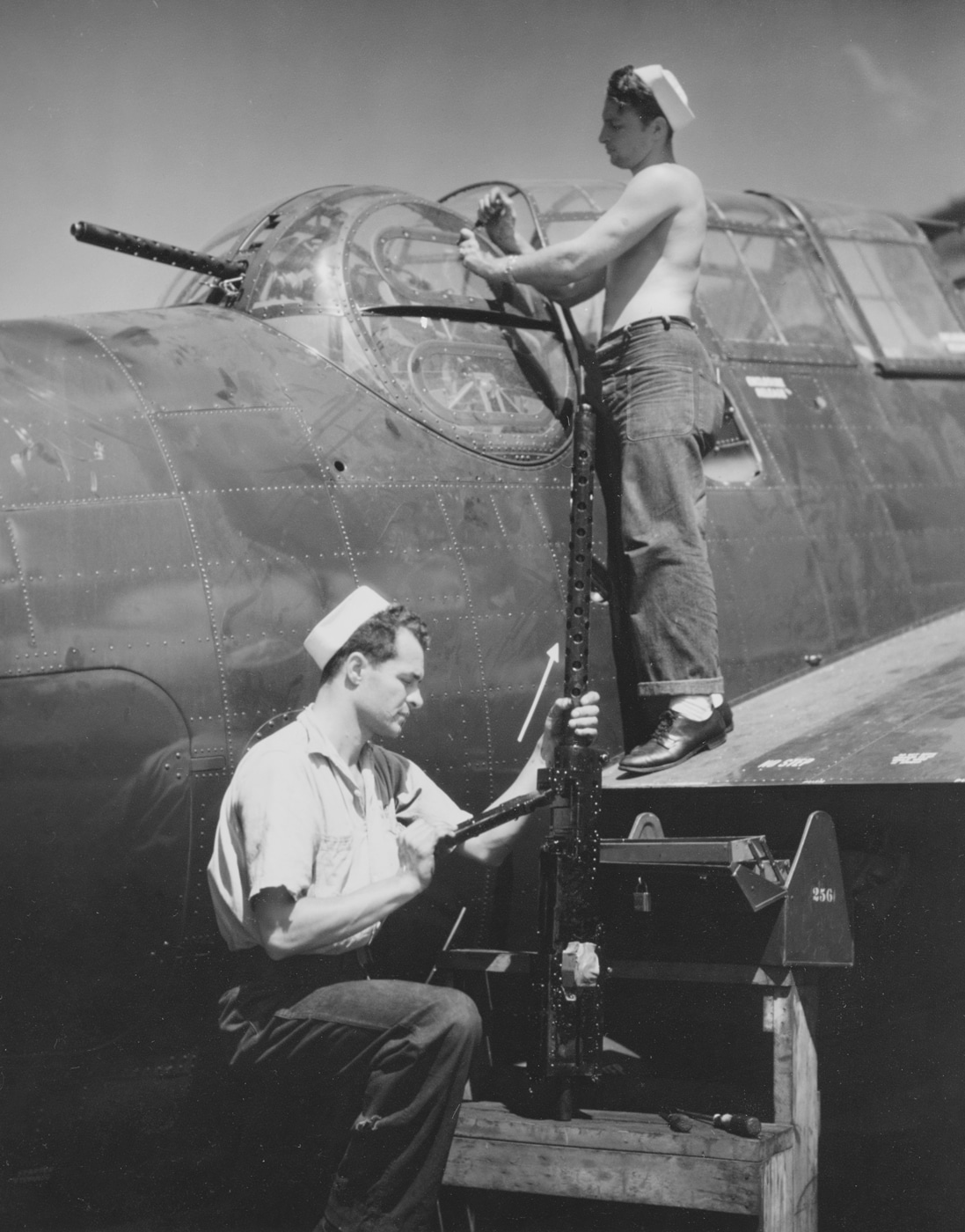
As an attack aircraft, the Grumman TBD could carry 2,000-lb. torpedoes or bombs (later increased to 2,500-lb. bombs with the General Motors TBM-3 models). Late in World War II, the aircraft also became the first to employ high-velocity aircraft rockets (HVARs).
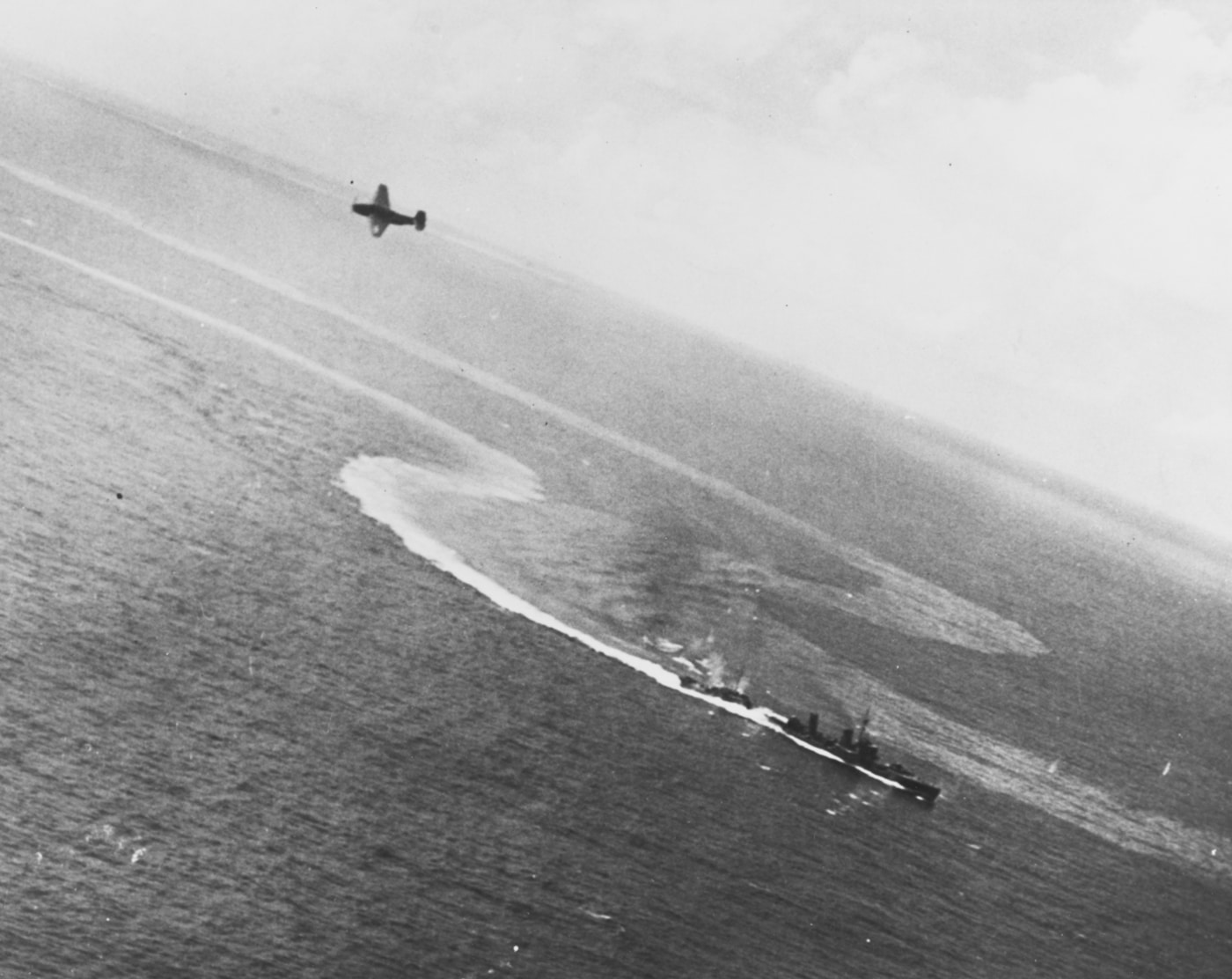
The U.S. Navy placed orders for 286 aircraft in December 1940, all the more impressive as the XTBF-1 prototype only made its maiden flight on August 1, 1941, while the production TBF-1 joined the fleet in January 1942. Within six months, 145 were delivered — and six were assigned to Torpedo Squadron (VT) 8 for evaluation. It was a testament to the Grumman team to design, prototype, test, and then produce an aircraft to the U.S. Navy’s specifications.
The Avenger at Midway and Beyond
The first six aircraft ferried to Midway Island arrived in the nick of time to take part in the June 2, 1942 battle. As the Naval History and Heritage Command’s National Naval Aviation Museum explained, “Operating from land, the aircraft attacked the Japanese fleet but were mauled by enemy fighters. Five were shot down, and the surviving aircraft was badly damaged with one crew member dead and one wounded. The heavily damaged TBF-1 provided valuable information that would be the source of improvements to its combat survivability.”
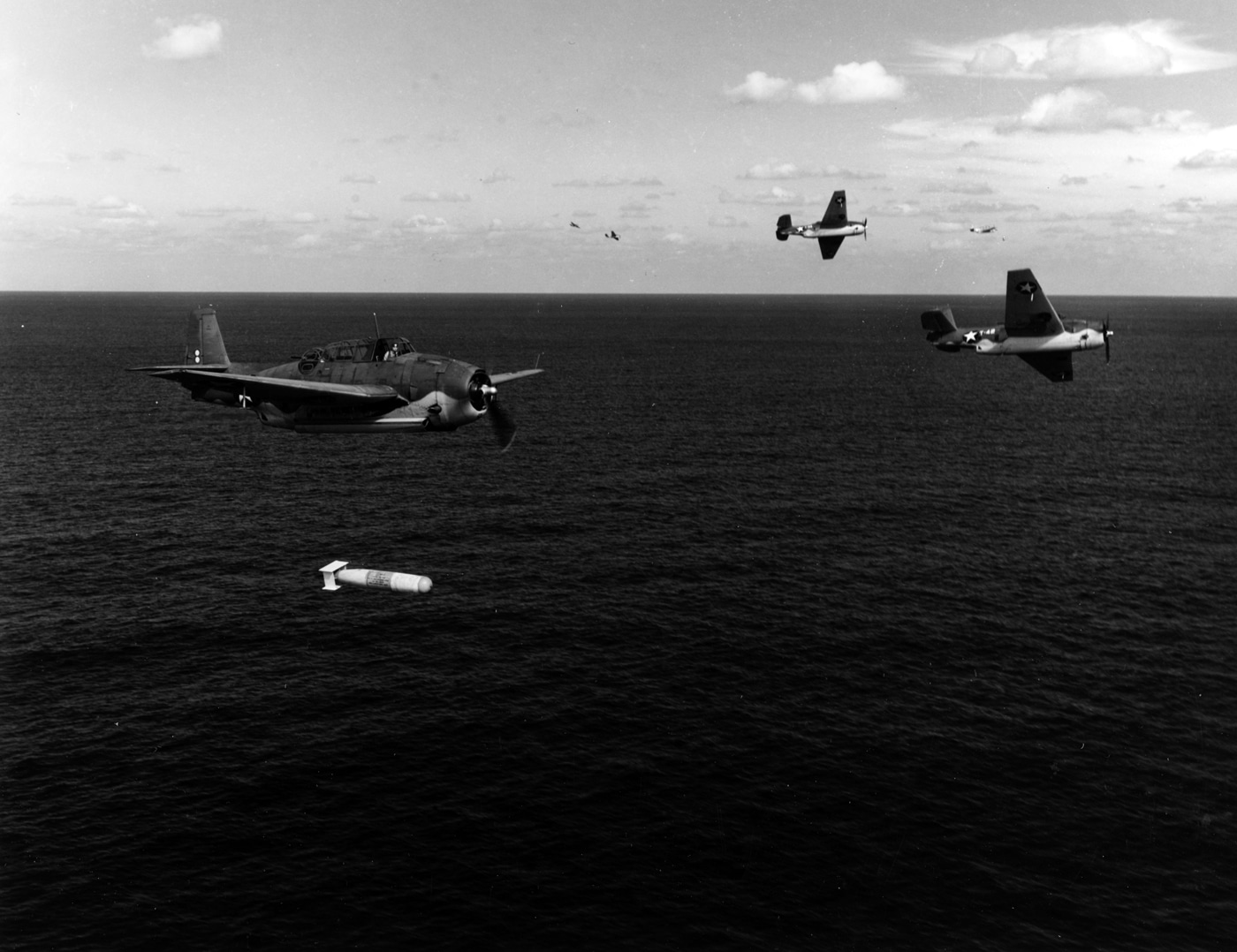
It was soon after; as the U.S. Navy sought a replacement for the F4F Wildcat that Grumman was forced to concentrate on the development of what would be the F6F Hellcat. Production of the F4F and TBF was handed over to General Motors’ Eastern Aircraft Division. Redesignated the TBM, the aircraft was built in great numbers at GM’s facilities in New York, New Jersey, and Maryland.
Even as production increased, the role of the aircraft evolved.
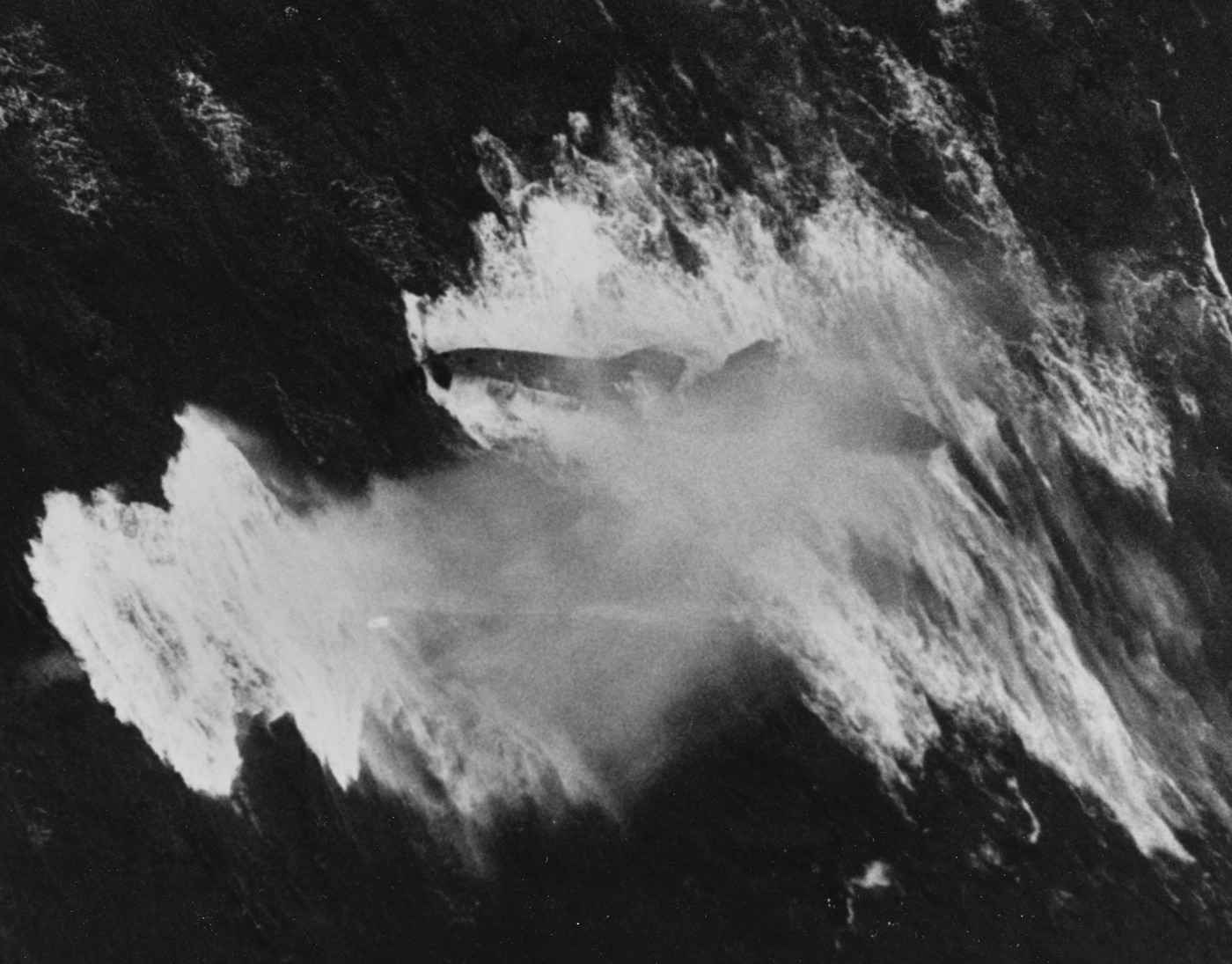
Due to effective anti-aircraft and threats from fighters, the Avengers were rarely employed in torpedo attacks after Midway, carrying bombs instead — but the aircraft would serve in other roles, notably reconnaissance, ASW, light transport and cargo work, medical evacuation, and even close air support (CAS).
The U.S. Navy also wasn’t the only operator, as the UK received more than 900 TBM-1 (Avenger Mk II), originally designated the Tarpon. During World War II, the aircraft served on British aircraft carriers and bases around the British Empire. In the Atlantic, Avengers in service with either the U.S. or British forces were credited with destroying or sharing in the destruction of 42 German U-boats.
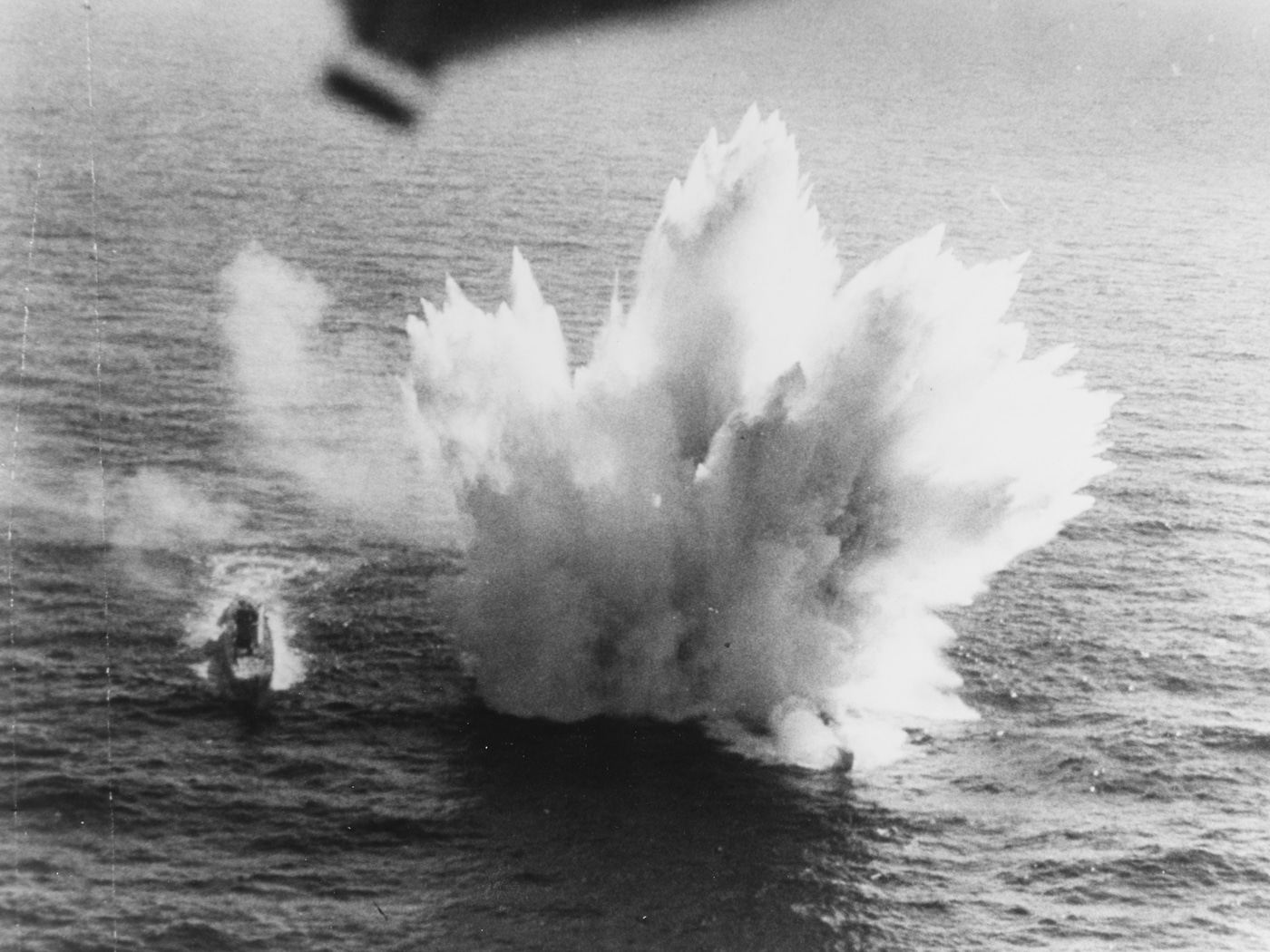
After World War II, the TBF/TBM Avenger saw service with the Canadian Navy, the French military and the Dutch military; while in a twist of fate, Japan — the nation it was designed to fight — was also an operator of the aircraft. The Avenger was among the post-war surplus warbirds that found use in the civilian world as a crop sprayer in Canada, a crop duster in New Zealand and a fire bomber (dropping water on wildfires) in both the U.S. and Canada.
George H.W. Bush and the Avenger
One of the most famed Grumman TBF Avenger pilots was the late President George H.W. Bush, who just six months after the attack on Pearl Harbor enlisted in the U.S. Navy on his 18th birthday and soon after began pre-flight training at the University of North Carolina at Chapel Hill. After completing flight training, then-Ensign Bush was assigned to Torpedo Squadron 51 (VT-51), serving as a photographic officer. He was the youngest pilot in U.S. Navy history and participated in operations in the spring and summer of 1944. During one mission, he was forced to make a water landing with his Avenger, yet he and his crew were rescued.
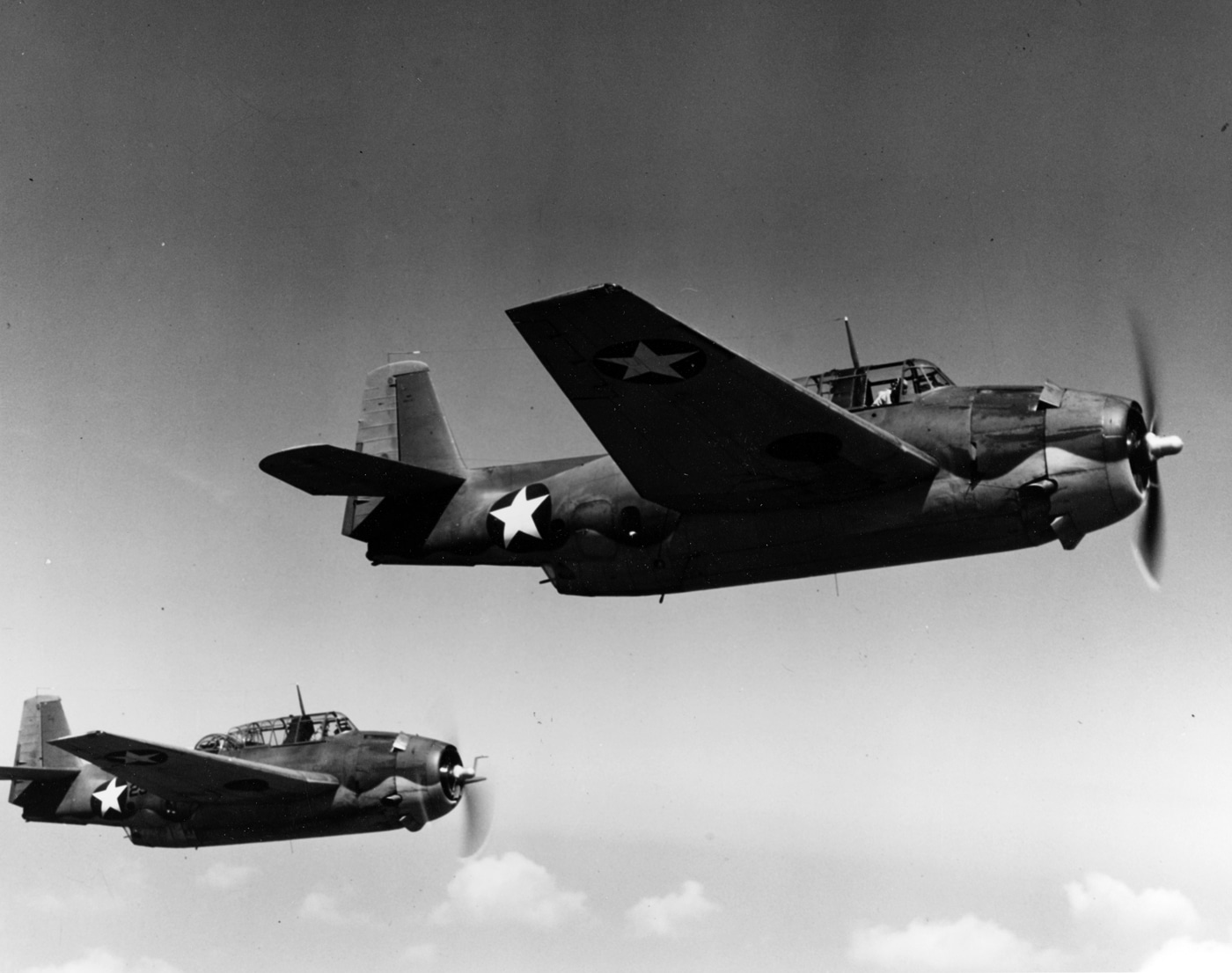
After returning to duty and resuming normal flight operations, on July 25, 1944, Ensign Bush and another pilot were credited with sinking a Japanese cargo vessel. Lt. Junior Grade Bush, operating from the Independence-class light aircraft carrier USS San Jacinto (CVL-30), took part in the attack on the Japanese island of Chichi Jima. On September 2, 1944, his plane was hit by anti-aircraft fire. However, he was able to complete his attack and released the Avenger’s bombs over the designated target.

Bush and one of his crew mates were able to bail out, but the other man’s chute failed to open. Bush landed safely in the water and waited for four hours in an inflated raft until he was finally rescued by the Gato-class submarine USS Finback (SS-230). For his actions, including taking part in 58 combat missions, Bush was awarded the Distinguished Flying Cross.
After Mr. Bush passed away at age 94 in late 2018, cartoonist Marshal Ramsey, who is also a pilot, published a sweet editorial cartoon honoring the 41st president. The cartoon, which soon went viral, showed Bush arriving in heaven in an Avenger to meet his late wife Barbara and daughter Robin, who died of leukemia when she was three. The former First Lady greets her husband with open arms saying, “We waited for you.”
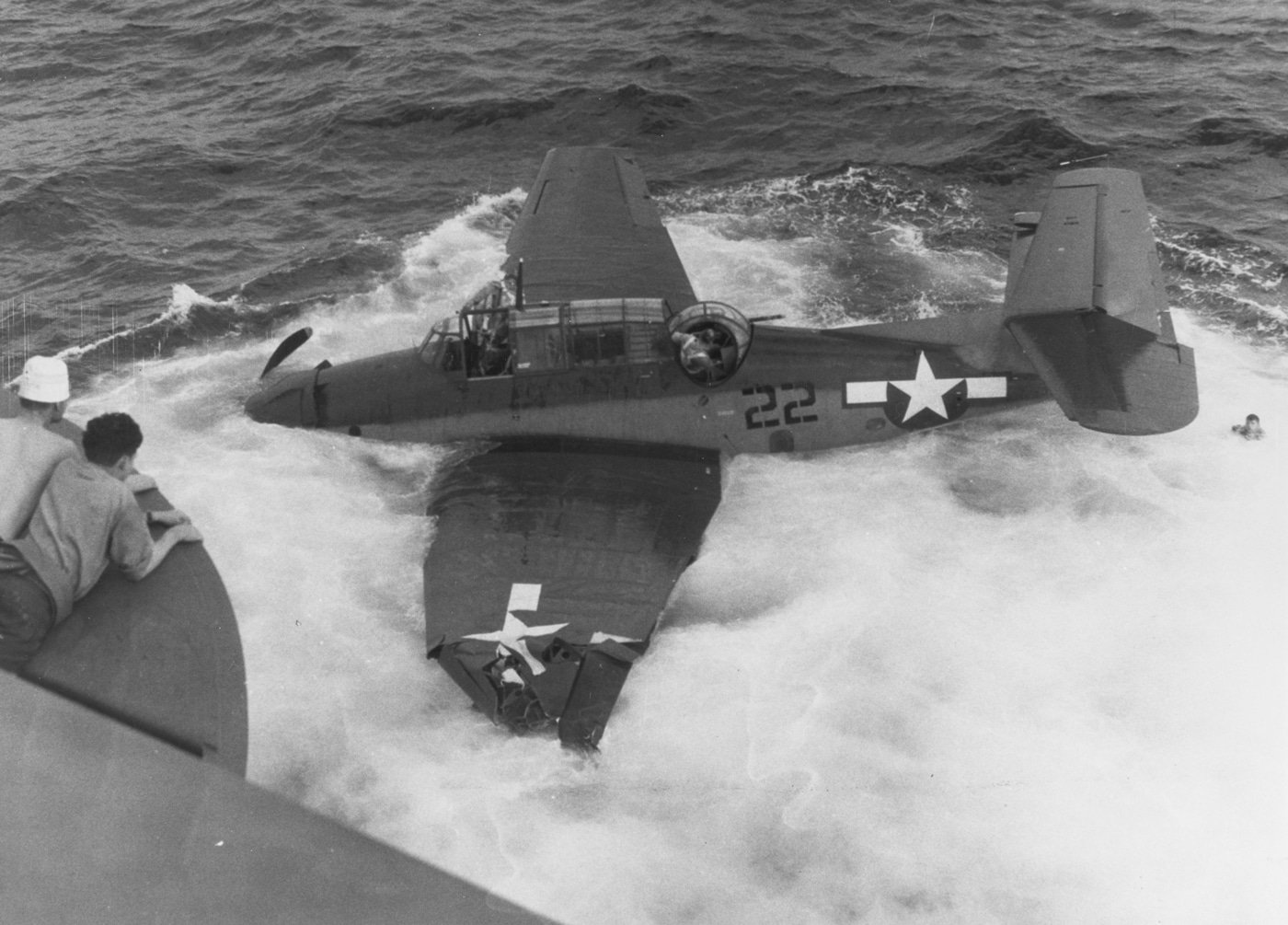
Ramsey explained on social media, “I’ve flown in a TBM Avenger, the plane he flew in World War II. I can’t imagine being that young and having that much responsibility as he flew through fields of flak,” and added, “Not every cartoon I drew about President Bush was flattering. But the last one is.”
Legacy of the Avenger
Screen legend Paul Newman also enlisted in the U.S. Navy with the goal of being a pilot. However, his vision challenges proved an issue, but he still was able to train as a radioman and rear gunner. Aviation Radioman Third Class Newman became a turret gunner on a Grumman TBF Avenger torpedo bomber in the Pacific. He earned several commendations, including the Combat Action Ribbon and Combat Aircrew Wings, before his discharge in 1946.
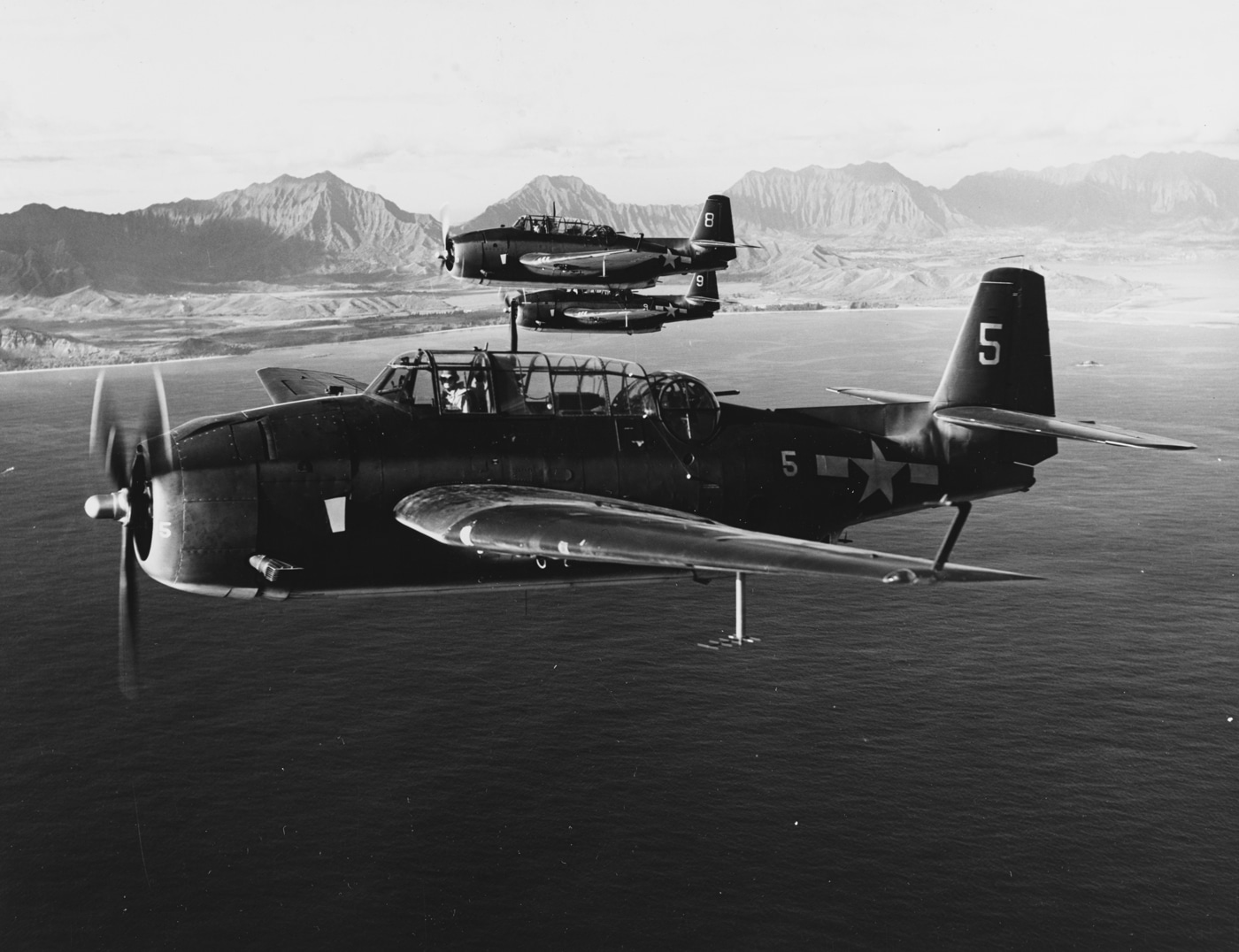
The Grumman TBF Grumman may not have been the most famed aircraft in the war in the Pacific, but it played a vital role — and is credited with aiding in the sinking of the Imperial Japanese Navy battleships Yamato and Musashi. As noted, the Avenger went on to have a career that lasted well into the Cold War in both military and civilian roles.
Of the 9,839 produced, only a few dozen are still airworthy. Sixteen are currently reported to be on display around the United States, including at the National World War II Museum in New Orleans, at the Intrepid Sea-Air-Space Museum in New York City, on the USS Lexington (CV-16) Museum in Corpus Christi, at the USS Yorktown (CV-10) Museum in Charleston, S.C., and at George Bush Presidential Library in College Station, Texas.
Editor’s Note: Please be sure to check out The Armory Life Forum, where you can comment about our daily articles, as well as just talk guns and gear. Click the “Go To Forum Thread” link below to jump in and discuss this article and much more!
Join the Discussion
Read the full article here









